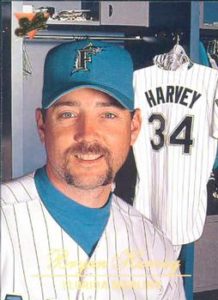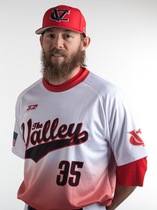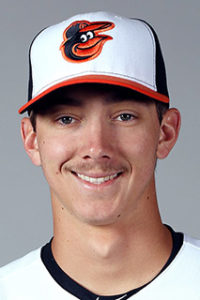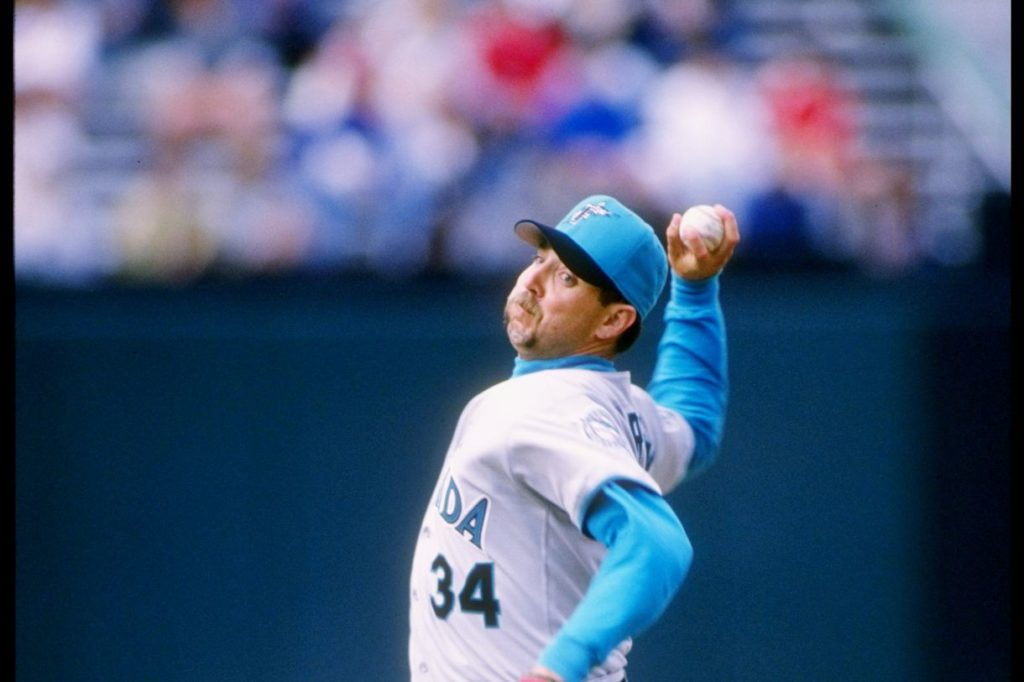
Former major league reliever Bryan Harvey, a member of the Catawba County Sports Hall of Fame, has been hired by the Texas Rangers to work with their pitching prospects on developing the “out” pitch that carried Harvey to the major leagues, the split-finger fastball./FLORDIA MARLINS PHOTO
By CHRIS HOBBS
HobbsDailyReport.com
SURPRISE, Ariz. – While watching closely from afar as his son nears making the major leagues, former big league reliever Bryan Harvey is also again taking a hands-on role to help other young pitchers pursue the same dream.
Harvey — who saved 177 games over a career just shy of 10 years – is working spring training as a part-time employee for the Texas Rangers. They’ve hired the Catawba County native to teach some of their hurlers his specialty, the split-finger fastball.
During the season, Harvey will spend a few days at a time on the road – probably 12 to 15 each month, he says – going to where Texas has minor league teams (Round Rock, Tex.; Frisco, Tex., Kinston and Hickory) to work with Rangers pitching prospects.
“Probably enough to see all the pitchers,” Harvey said in a phone interview with HobbsDailyReport.com. “They have five or six (pitchers) picked out right now…
“Hopefully, it (the split-finger) does for them what it did for me. Without it, I don’t get to the big leagues.”
It’s Harvey first coaching role since serving a season as pitching coach for the Asheville Tourists and then two seasons in the same role in Tulsa (Okla.), both for the Colorado Rockies organization. He left coaching after the 2010 season, then focused on working with his son, Hunter, to get him ready for a baseball future.
Hunter Harvey, after starring like his dad did at Bandys High, was the Baltimore Orioles’ first-round pick in the 2013 Major League Baseball Draft. And after battling injuries, the younger Harvey has recovered and is on the O’s major league roster and shining in spring training.
After making this third spring training start on Sunday, facing the Boston Red Sox, it was announced Hunter will stay with the Baltimore Orioles at least another 10 days. He is scheduled to start against the New York Yankees in Tampa, Fla. (1:05 p.m. start) on Wednesday.
Baltimore opens its American League schedule on March 29 at home against the Minnesota Twins.
Meanwhile, his dad is in spring training with the Rangers in Surprise, Ariz. — about 25 miles northwest of Phoenix — for at least another 10 to 12 days before returning to Catawba County.
A new opportunity
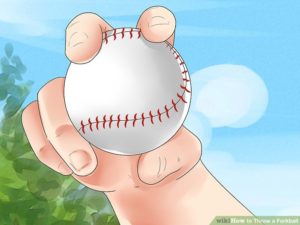
THE FIRST MARLINS VICTORY
Watch video of the first game played by the Florida Marlins, against the Los Angeles Dodgers, and see former Bandys High star Bryan Harvey close it out and earn the first save in club history: https://www.youtube.com/watch?v=RY_BYzU4fxY
Bryan Harvey last played in the major leagues 19 years ago, eventually leaving baseball after an arm injury and surgery, and has experienced seeing both of his sons drafted (Kris, his oldest, played eight years in the minors, getting as high as Class AA with the Marlins and Pirates).
“Yes and no,” he said when asked if it seemed like that long ago that he was a big-league All-Star, once in each league. “It seems like a long time and at the same time not.”
Anchored as always by his family — which now includes two granddaughters — Harvey said the chance to get back in baseball yet not be away from home from February to September is a fit he can live with.
“Me and (wife) Lisa … talked about it (coaching), that if the right opportunity came along,” he said. “This did, so we took it. It’s a chance to (often) see the wife and family and the grandkids.”
Harvey still works closely with his son Kris — also pitching coach for Catawba Valley Community College — at The Harvey Baseball Academy (https: www.harveybaseballacademy.com).
But the chance to do hands-on teaching, much like he got from a key retired major-league pitcher, appeals to Bryan Harvey’s pure love for the game.
He was taught the split-finger by Joe Coleman, a second-generation major league pitcher (his dad, Joe, also pitched in the bigs).
Joe Coleman, now 71, pitched 15 years in the majors for six teams and went 142-135 with 484 big league games and 1,728 strikeouts. His best year, in 1973 with the Tigers, he won 23 games.
Harvey had been in the then-California Angels organization about a year and was still in the minors when he developed, via Coleman, the pitch that carried him to the major leagues.
“I started throwing it (some) my first year,” Harvey recalled. “I threw it better my second year. And when it (took), it was over.
“I don’t know that I ever had it (mastered), but I got pretty consistent at throwing it hard and making it do what I wanted it to.
“Once it got consistent and moving, it was pretty hard to hit. It was a change (from a 92-plus mph fastball) and had a directional change. When it was on, it was too hard to hit.”
In a one-time survey of major leaguers that included Cal Ripken Jr., Harvey’s split-finger was the most difficult to hit, those players said.
Teaching success
That he gained an opportunity to teach the split-finger fastball to others came from a memory one of the pitchers Harvey worked with in Asheville, as that player was in a Rangers meeting where a discussion started about the split-finger fastball.
“They called me and it all kind of came together,” Harvey said. “It was a couple of weeks before spring training and Danny Clark (Texas pitching coordinator) called and we had a good conversation and he brought me to Arizona for three days.”
Harvey said the Rangers had done some research on the split-finger that virtually matched his approach to throwing it.
“Some of the kids are having trouble spinning the ball,” Harvey said. “And what research they did and what I am saying is pretty much the same thing.
“You split your fingers (second and third on throwing hand) and throw it hard but with no much velocity. Some like to use it as a change-up but there’s a happy medium on that.
“You spread the second and third finger … and there a lot of different grips. I had a seam with each of my fingers. I didn’t want it to knuckle but to have a spin.
“A lot of guys that throw the baseball hard (also) need to get it to do something at the end – a swing and miss pitch.”
Harvey finished with 448 strikeouts in 387 innings in the bigs, with an ERA of 2.49, a 17-25 record in 322 appearances and a dominant 1991 when he led the American League with 46 saves (101 strikeouts, 17 walks).
He said at his peak, he threw a split-finger fastball nearly 50 percent of the time. He did it as long as his God-given ability allowed him to, which was his philosophy all along.
“That’s it,” he said. “That’s all it is … throw as hard as you can for as long as you can.”
Enjoying a different role
At age 54 (he will be 55 in June), Harvey said his arm is nothing like it used to be and that’s life.
“I throwing BP (batting practice),” he said. “I can’t break glass. I took a bet (from his sons) if I could hit 70 miles per hours and I couldn’t do it. I’ve got a piece of crap arm, it’s no good.”
Harvey has not taught Hunter Harvey the split-finger fastball – “His arm angle (etc.) is a little different,” his dad said, noting that Hunter has his curveball as an ‘out’ pitch – but the Rangers could benefit if their prospects develop a split-finger anywhere near effective as Harvey’s was (see video).
As former Florida Marlins coach Doug Rader once said of Harvey: “Some of the real good old spitballs and J.R. Richard’s ninety-plus slider were as close to being unhittable as you (Bryan Harvey) get.”
Harvey, who says the biggest change at the major league level since he played is the big contracts (he once landed a $15 million, four-year contract and the average salary now is nearly $4.1 million), knows the landscape has changed a bit.
But the bottom line, in many ways for pitchers, is still the same.
“You stay as healthy as long as you can,” he said. “You throw as long as you can.”
HobbsDailyReport.com’s Chris Hobbs first began covering Bryan Harvey when Harvey was a 15-year old right-hander playing baseball at Bandys High. He has followed Harvey’s long baseball career at all levels for nearly 40 years — including making multiple trips to California to watch and write stories about Harvey when he pitched for the then-California Angels – and has also covered the careers of Kris and Hunter Harvey. You can reach Hobbs at HobbsDailyReport.com@gmail.com.
MORE ON THE SPLIT-FINGER FASTBALL: https://www.google.com/search?q=how+to+throw+the+split-finger&ie=utf-8&oe=utf-8&client=firefox-b-1-ab#kpvalbx=1

